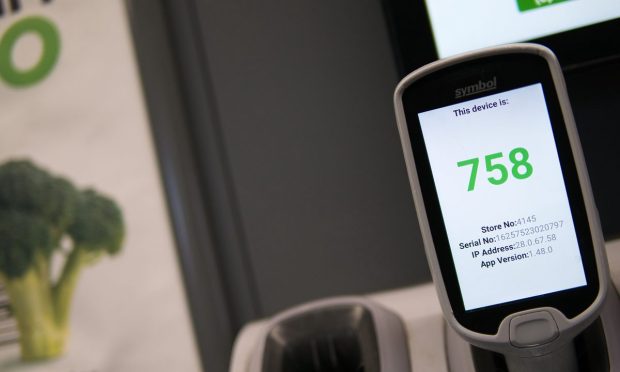No Time to Wait: PYMNTS Data Show Consumers Eager to Skip Checkout Lines

Call it a sign of the digital times, but new data show that in-store shoppers have come to expect digital features and a customer experience that are equivalent to what they’ve grown accustomed to when shopping online.
Thanks to the growth of device-enabled shopping, a PYMNTS report explains, today’s consumers use smart shopping carts and apps that allow them to check prices and inventory and even check out at their leisure.
These self-service options are designed to provide customers with new ways to curate their shopping journeys. They also allow consumers to shop when, where and how they want and, most importantly, enable them to stop standing in traditional checkout lines — arguably one of the most hated shopping experiences of all.
As a result of these and other benefits, self-service checkouts are increasingly being adopted by today’s retailers and are projected to more than double over the next four years from the present $40 billion level.
Skipping the Checkout Line
The most important device-enabled shopping capability is skipping the checkout line. The PYMNTS survey results published in Today’s Self-Service Shopping Journey: The New Retail Expectation found 17 percent of consumers said that is the most important capability that would improve their overall in-store experience.
Married consumers with children were especially interested in skipping the checkout line, with 20% of them saying that was the most important device-enabled capability.
When survey results are sorted by age groups, three of five generations are most interested in skipping the checkout line. Those include 18% of millennials, 18% of bridge millennials and 20% of Gen X.
Price Checking
Other device-enabled capabilities that were selected as most important by a double-digit share of consumers were price checking (16%), item finder (12%), access to discounts/coupons (11%) and in-store inventory check (11%).
Price checking was especially important to consumers from two types of households: unmarried with children and unmarried without children. Among these consumers, 17% and 16%, respectively, said price checking was the most important device-enabled shopping capability that would improve the overall in-store experience.

Baby boomers and seniors, too, are interested in price checking. Among the consumers in this age group, 17 percent said that was the most important device-enabled capability.
The youngest consumers, members of Gen Z, said in-store inventory check was most important to them: 15% said that would most improve the overall in-store experience.
Six other capabilities were selected as most important by a 5% or lower share of consumers: access to shopping list, loyalty checkpoint, product reviews, order unavailable products in store, review product information and product recommendations/ratings.
It should be noted that a double-digit share of consumers said each of those capabilities was important to them, just not most important.
‘Just Walk Out’
Amazon is one company that is bringing cashierless technology to market. The company’s “Just Walk Out” technology was pioneered in Amazon Go stores and is now a business-to-business (B2B) service offered to others. Some retail industry analysts have projected this could grow into a $50 billion business.
By combining that with other device-enabled capabilities into physical stores, retailers can supplement their existing offerings with new ones inspired by eCommerce, and in turn give consumers the best of both worlds experience they want.
